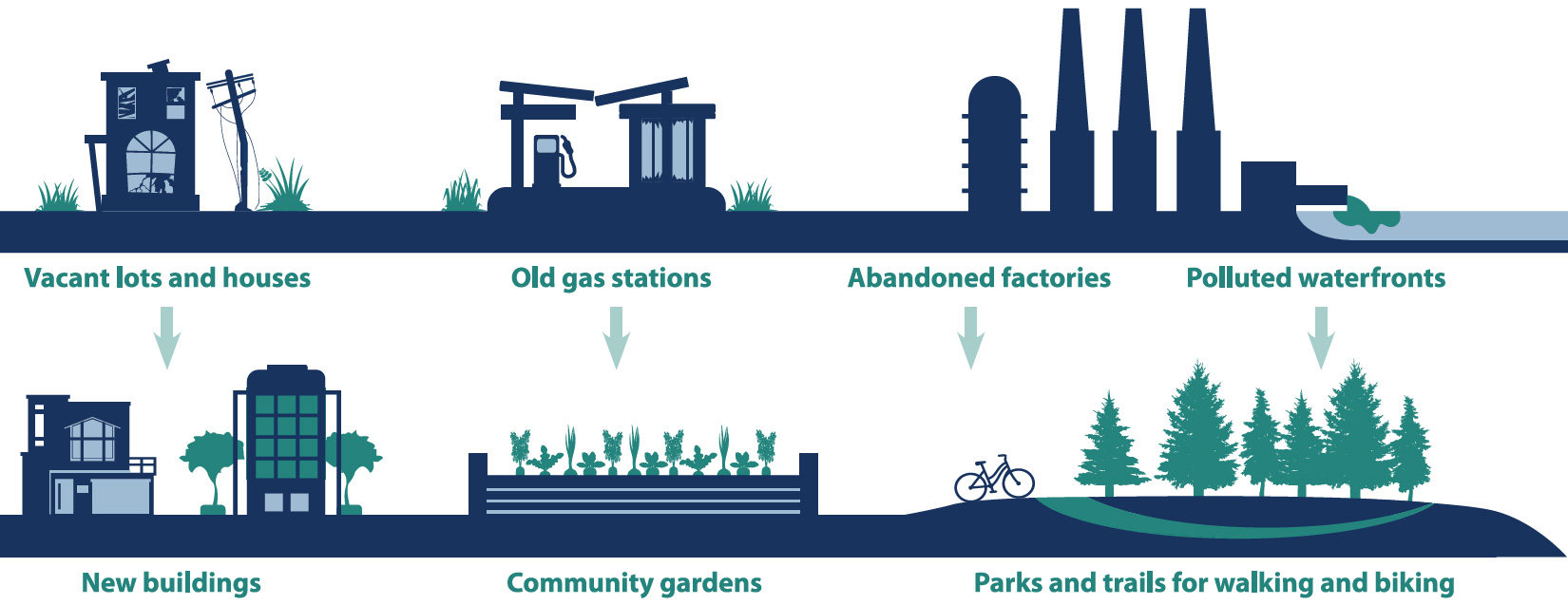Land Reuse Overview Fact Sheet
Protecting America’s Health from Toxic Exposure:
ATSDR’s National Land Reuse Health Program

Land reuse sites are sites that are slated for redevelopment but may have chemical contamination It may be difficult to redevelop or reuse these sites due to the potential or confirmed presence of a hazardous substance, pollutant, or contaminant.
Nearly one-half million (450,000) potentially dangerous land reuse sites (sometimes referred to as brownfields) exist across the United States. ATSDR plays a major role in helping to successfully redevelop these sites.
ATSDR’s National Land Reuse Program promotes health, community involvement, partnerships, communication, and education to:
- Provide technical assistance, community partnership projects, soil sampling events, and coordinated efforts in support of ATSDR’s environmental public health work related to land reuse sites.
- Facilitate community involvement in projects that incorporate health considerations in land reuse to improve overall community health.
- Achieve safe reuse of environmentally contaminated land to improve community health and reduce health and social inequities.
- Track unique public health indicators associated with land reuse and redevelopment to maximize health outcomes through targeted community revitalization projects.
- Educate the environmental health workforce about health-focused land reuse.
Vacant lots and houses, old gas stations, abandoned factories, and polluted waterfronts to
New buildings
Creating healthy ad safe community spaces
Community gardens
Making it easier to get healthy foods
Parks and trails for walking and biking
Increasing physical activity and safety

For more information, visit: www.atsdr.cdc.gov/sites/brownfields.